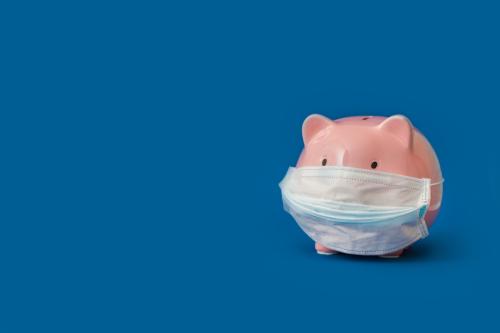As of this morning, yields on 10-year Treasury bonds stood at 1.33 percent. The yield on TIPS bonds—which are adjusted for inflation—was negative. These astonishingly low returns, occurring even in the presence of a growing economy and rising inflation fears, are not new. Interest rates on government debt have been falling in many countries for the last several decades, with markets indicating that rates may stay low well into the future. Many experts have focused on how sustained low interest rates fundamentally change the nature of long-run fiscal policy choices. In a new paper, presented today at an NBER conference, we examine a related issue: the implications of sustained low interest rates for the structure of tax policy.
We show that low interest rates (a) reduce the differences between consumption and income taxes; (b) make wealth taxes less efficient relative to capital income taxes, at given rates of tax; (c) generally mute the value of traditional tax preferences for business investment, retirement saving, and capital gains, and (d) substantially raise the valuation of benefits of carbon abatement policies relative to their costs.
At the outset, it is important to distinguish two phenomena: a reduction in all rates of return, and a reduction in yield on government debt relative to other assets. Tax incentives and rules may have different effects on private decisions when the private return to capital is low than when the private return to capital remains high, but government debt yields are low.
In fact, the rates of return on all assets have declined, and safe asset returns have declined relative to returns on risky assets. The fall in return on all assets is commonly attributed to a glut of global saving, due to changing demographics and increased concentration of income and wealth, that has outpaced investment demand. The fall in return on safe assets relative to risky assets is typically attributed to an investor “flight to safety” and a relative worldwide shortage of safe assets. Most projections expect interest rates to remain lower in the future than they were in the 1980s and 1990s.
Several significant issues in tax policy are affected by the presence of sustained low interest rates. One of the longest standing debates in tax policy addresses the relative merits of using consumption versus income as a tax base. At the risk of oversimplifying, income taxes generally burden capital more heavily and are more progressive than consumption taxes. Low interest rates reduce the differences between the two taxes. For example, a pure income tax would burden labor income and all forms of capital income (the normal or “safe” return — the return to waiting; the return to risk; and excess returns from things like luck, skill, and imperfect competition). Consumption taxes burden all the same sources of income except the normal return to capital. In theory, abstracting from differences in the timing of tax collections, as the safe return goes to zero, the differences between the two taxes also go to zero. On the other hand, one must also take account of the one-time lump sum tax on existing wealth that the introduction of consumption taxes creates, and how a lower rate of return affects it. These combined effects of low interest rates may change the attractiveness of adopting a consumption tax.
Recent years have seen increased attention to wealth taxes. In simplified environments, a wealth tax can be expressed as an equivalent tax on capital income. As the rate of return falls, the equivalent income tax rate of any given wealth tax rises. That is, a given wealth tax rate becomes more distortionary relative to a given capital income tax as the rate of return falls.
Policies that address climate change—such as a tax on carbon emissions—induce a stream of future costs (taxes or regulations, for example) and a stream of benefits (a healthier environment and long-term economy). But the benefits are “back loaded” (i.e., postponed) relative to the costs, extending over many generations. Weighing this tradeoff involves many considerations, and there is a major debate about whether to discount future benefits at all. Assuming that future benefits and costs are discounted, the interest rate used has an enormous effect on the net benefits. As interest rates fall, the benefits of a carbon tax rise relative to the costs. Because the benefits are received much after the costs are incurred, the discount rate employed has an enormous impact on the benefit-cost ratio of abatement policies
Finally, and not surprisingly, low interest rates dull the effects of incentives for personal saving and business investment. They also reduce the “lock in” effect that inhibits capital gains realizations through asset sales.
It is always difficult to predict interest rates, but if rates stay low, the implications for tax policy are significant.
The Brookings Institution is financed through the support of a diverse array of foundations, corporations, governments, individuals, as well as an endowment. A list of donors can be found in our annual reports published online here. The findings, interpretations, and conclusions in this report are solely those of its author(s) and are not influenced by any donation.
The Brookings Institution is committed to quality, independence, and impact.
We are supported by a diverse array of funders. In line with our values and policies, each Brookings publication represents the sole views of its author(s).







